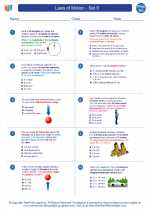Speakers in Physics
In the field of physics, speakers are devices that convert electrical signals into sound waves. This process involves several principles of physics, including electromagnetism and wave mechanics.
How Speakers Work
Speakers consist of several key components, including a diaphragm, a voice coil, a magnet, and a frame. When an electrical signal is applied to the voice coil, it becomes an electromagnet that is either attracted to or repelled by the magnet. This causes the diaphragm to vibrate, producing sound waves that are transmitted through the air.
Principles of Physics Involved
Several principles of physics are involved in the operation of speakers, including:
- Electromagnetism: The interaction between the electric current in the voice coil and the magnetic field of the magnet causes the voice coil to move, producing sound waves.
- Wave Mechanics: The vibrations of the diaphragm create compressions and rarefactions in the air, which propagate as sound waves.
- Acoustics: The study of how sound waves behave in different environments, including reflection, refraction, and diffraction.
Study Guide
Here are some key concepts and questions to review when studying speakers in physics:
- Define the function of a speaker in converting electrical signals into sound waves.
- Explain the role of the diaphragm, voice coil, magnet, and frame in a speaker's operation.
- Describe the principles of electromagnetism involved in the movement of the voice coil.
- Discuss how wave mechanics apply to the creation and propagation of sound waves by a speaker.
- Explore the basics of acoustics and how it relates to the behavior of sound waves produced by a speaker.
By understanding the principles and operation of speakers in physics, you can gain a deeper appreciation for the role of electromagnetism and wave mechanics in everyday technologies.
[Speakers] Related Worksheets and Study Guides:
.◂Physics Worksheets and Study Guides High School. Laws of Motion - Set II

 Worksheet/Answer key
Worksheet/Answer key
 Worksheet/Answer key
Worksheet/Answer key
